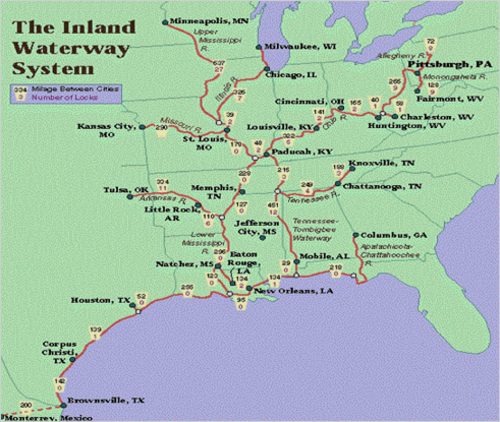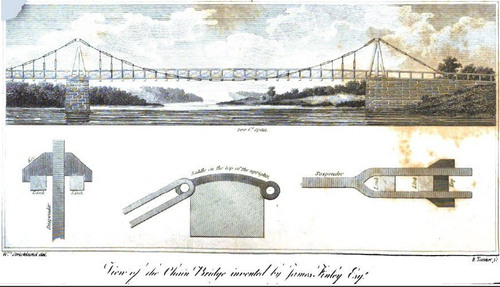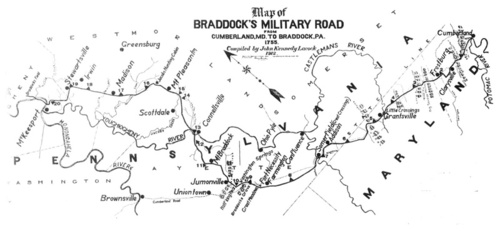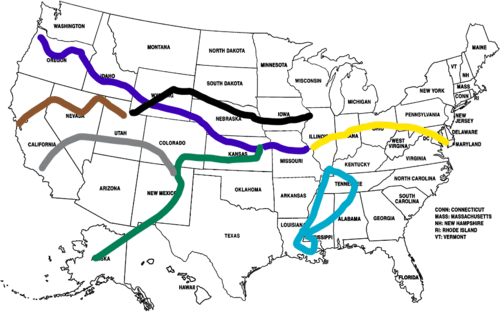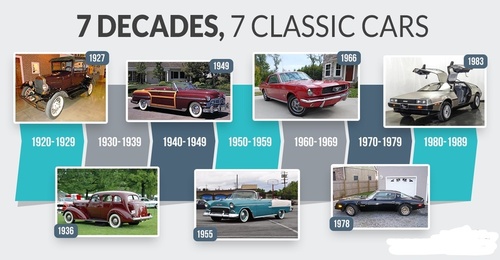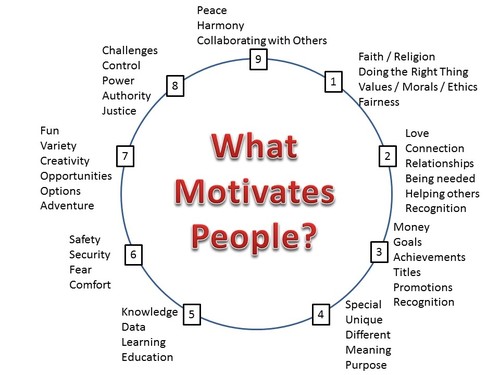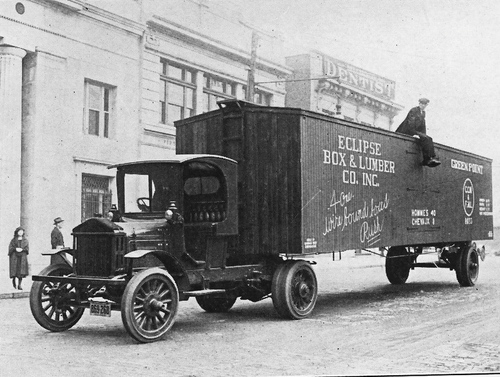Additional Maps and Interesting Information:
Micellaneous Maps:
Inland U.S. rivers centering on the Mississippi:
Pennsylvania Suspension bridge dating from around 1808:
The bridge pictured above has been called the "chain" bridge because the supporting elements are chain like parts. Bridges before the 1840's were rare and were typically regional. The age of bridge development follows train development especially after 1850. Another surge in bridge development begins after 1900 and especially after the development of the Interstate Highway system in the 1950's.
There were lawsuites between boat owners traveling the waterways and the newly developing railroad companies after the late 1830's. Bridges allowed trains to go across the large rivers, especially the Mississippi, and hurt the freight business built up by the large boat companies. This was to become true but progress could not be stopped. Trains nearly destroyed the barge freight business by the 1850's. A similar thing was to happen to the train business by the 1950's. Large trucks began hauling more freight than did trains by the mid 1950's.
________________________________________________________________________________________________
Braddock's Trail from 1755:
Braddocks Road, and later called a Trail, was first blazed in 1751. Before General Edward Braddock placed his name on the path, it was an old Indian trail dating back well before the 1750's. The Indian's called it "Nemacolin's" trail. The trail was originally planned to be used for war against the French. The original road was 12 feet wide and was built by over 600 workers and and a platoon of axmen. The trail was extended over the decades and many of the paths are still followed by modern roads. George Washington was an aid to General Braddock.
__________________________________________________________________________
Seven Major Ancient Travel Routes:
Purple: The Oregon Trail
Black: The Mormon Trail
Brown: Old California Trail
Grey: Old Spanish Trail
Green: The Santa Fe Trail
Yellow: Old Cumberland Road (Trail) sometimes called the National road
Blue: Natchez Trace, Northern and southern routes
Automobile Design Through the Decades:
From the squared off teens to the rounded forties, to the chromed out fifties, to the streamlined cars of the modern era, the automobile evolved in design and technology. Wood bodywork was replaced by steel then plastics came into popularity by the late 1960's. The car of the 21st. century is lighter for its size, gets much better gas milage, and lasts much longer than any car from the past.
Why people do what they do!
1. people are driven by their belief system (whether true or not but is comfortable)
2. people work through connections good or bad (people COPY others)
3. people want to win or achieve as a means of self protection (power = security)
4. people love variety (people seek SOME difference)
5. people learn and improve from experience
6. people seek to survive and feel safe
7. people respond to opportunity (decisions result in future success or failure)
8. people want a challenge and thrive in competition
9. people work within an "identity" (within a group of some sort which does not necessarily include close emotional connections)
__________________________________________________________________
Freight truck from the pre 1920's era:
The truck evolved from wagons with engines. Within a decades, small trailers were attached to Modet T's. Local delivery hauling began in larger cities then transportation between close towns followed. As the early "trucking" industry grew, vehicles grew larger and became dedicated to hauling more weight longer diatances. By the mid twenties, the industry was in full growth mode never to see growth slow down.
